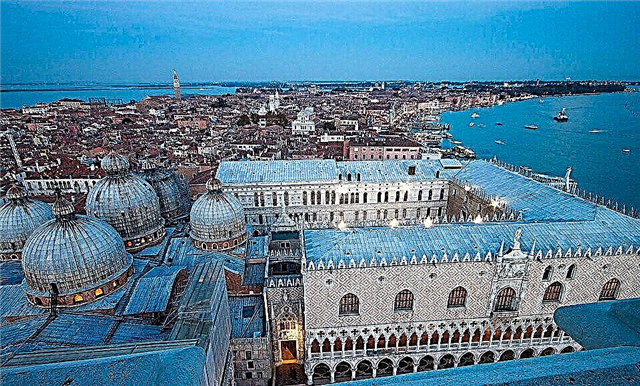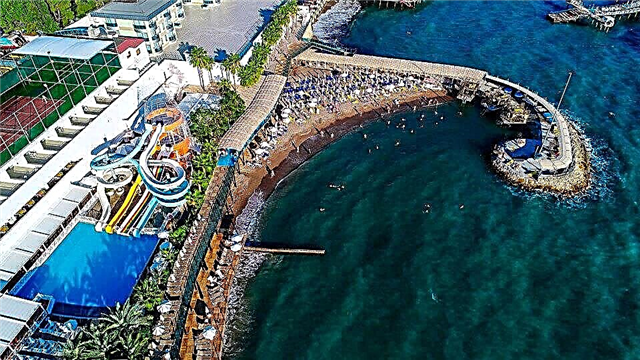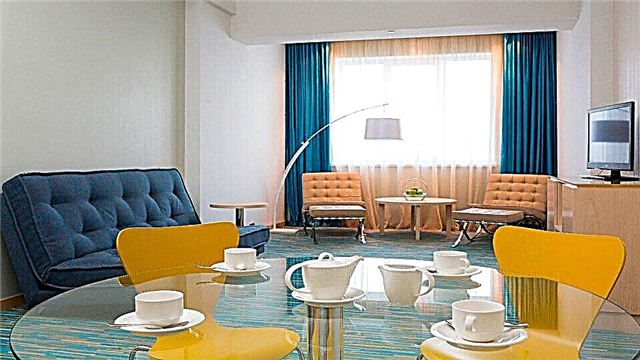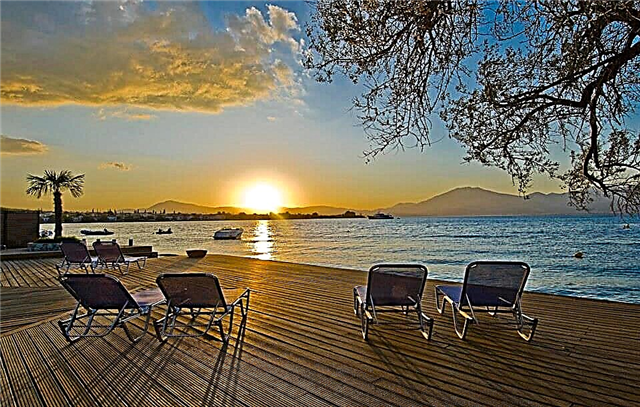Not every provincial city of Russia can boast of its own museums, but there are several of them in Alexandrov. Aleksandrovskaya Sloboda stood on the way from Moscow to Trinity-Sergius Lavra, along which the Russian princes went on a pilgrimage. At the beginning of the 16th century, a royal residence arose on the site of a small settlement. Today there are several museums in Aleksandrov. They talk about the role that Alexandrov was destined to play in Russian history, about the life of the local merchants and the fate of Russian poets and writers.
Museum-reserve in "Aleksandrovskaya Sloboda"
Article: Aleksandrovskaya Sloboda - Russian medieval town

In the Intercession Church there are expositions - "The Tsar's Courtyard in the Aleksandrovskaya Sloboda. House Church of Ivan the Terrible", "The Royal Persons in the Aleksandrovskaya Sloboda", "The History of One Exhibit. Video Hall", "The Dining Room of the 16th Century", "The Image of Ivan IV the Terrible in Paintings "," Sennik bed "," Medieval cellars of the XVI century "," The fortress is spacious, magnificent "," Treasures of the land of Alexander "
The museum collections, which are housed in the churches and palaces of the former Aleksandrovskaya Sloboda, are among the most visited on the "Golden Ring" of Russia. Thousands of Russian and foreign tourists come here every year.
Small in size, Alexandrov has preserved in its center a whole medieval city. On the territory of the architectural ensemble of the Alexander Kremlin, you can see the most beautiful monuments of Russian architecture of the 16th-17th centuries, created during the reign of Grand Duke Vasily III and his son John IV the Terrible. It also houses interesting museum collections that tell about the dramatic pages of Russian history and the emerging Russian autocracy.

The Dormition Church houses expositions - "In the Merchant Shop", "Hall of Contemporary Orthodox Art", "Tsar's Leaven", "Exhibition" The Last Secret of Ivan the Terrible "
Nowadays, the museum-reserve divides the Kremlin territory with the Holy Dormition convent. From the traditional utensils of a simple peasant hut to the luxurious royal choir - such is the scope of this unusual museum. There are so many permanent exhibitions and exhibitions inside the Aleksandrovskaya Sloboda that travelers who come here should plan at least 3-4 hours to explore them.
In the Church of the Intercession (XVI century) you can see the royal chambers, which once belonged to Ivan IV the Terrible. In the spacious white-stone cellars and basements there is the king's house church, and ancient frescoes are visible on the walls. The sovereign lived here for over 17 years and ruled the Russian lands from here. In the palaces of Alexander, he hosted the reception of foreign ambassadors and signed important political and trade agreements.

In the Crucifixion church-bell tower there are expositions - "Aleksandrovskaya Sloboda. There were legends", "Aleksandrovskaya Sloboda of the 17th-18th centuries. Assumption Monastery", "Observation deck"
The main museum exhibits are located in the Great Throne Room. They tell about the period of Russian history when the Aleksandrovskaya Sloboda was the capital of Russia and the center of the oprichnina created by the tsar. Interesting exhibits are dedicated to the election of royal brides and the wedding ceremony. And in a separate museum hall there are paintings depicting Tsar John IV the Terrible.
From the observation deck of the high Crucifixion bell tower, the quarters of the modern city and the valley of the Seroy river are clearly visible. Once, from the highest building of the Aleksandrovskaya Sloboda, the first Russian Ikar, the servant Nikitka, flew on homemade wings. Although the Russian craftsman managed to fly a considerable distance and land alive, the tsar considered his act impudent, and the hapless inventor was executed.

In the Trinity Cathedral there is an exposition - "Trinity Cathedral"
One of the most valuable collections of the Museum "Treasures of Three Centuries" is exhibited in the Assumption Church (16th century). It consists of amazingly beautiful fabrics and objects of decorative and applied art, rare printed and handwritten books, as well as old icons. In the basement of the church, you can see the interiors designed as a merchant's shop and rooms where drinks for the royal table were made.
How does it work: The museum accepts visitors on all days, except Monday, from 9.00 to 17.00, on Fridays from 9.00 to 16.00.
Where is located: The museum complex is located in Museum Proezd, 20. From the railway station buses No. 4.7 run here.
Art Museum

Art Museum building
An old mansion with a park has been preserved in the city center. This beautiful neoclassical two-story building was built in the 70s of the 19th century, and was owned by the merchant of the 2nd guild, Alexei Mikhailovich Pervushin. In those days, a large merchant family lived in the house. In addition, business people and the city's creative elite constantly gathered in the estate.
Today, the historic building houses the collections of the city art museum. Having visited here, you can learn about the traditions of merchant life of the late XIX - early XX century. The halls display works by artists of that time and works of contemporary painters.

State hall in the art museum
On the carriage house of the estate, collections of folk crafts and artistic handicrafts of the Aleksandrovka land are presented. And in the outbuilding of the merchant's house there was an exposition called "Privratnitskaya", the exhibits of which tell about the conditions in which the merchant's servants lived. There is a souvenir salon in the same building. In addition to the usual excursions, interesting theatrical programs are held for museum guests.
How does it work: The museum receives visitors every day from 9.00 to 17.00. The exhibition hall is open all days except Monday and Tuesday, from 10.00 to 13.00 and from 14.00 to 17.00.
Where is located: The museum is open at 16 on the street. Sovetskaya, an exhibition hall - at 5 on the same street.
Memorial Museum of the Tsvetaev sisters

Facade of the Tsvetaev sisters memorial museum
At the beginning of the last century, in a house that belonged to A.A. Lebedev, Anastasia Tsvetaeva spent about two years. Her older sister, Marina, often visited her. At this time, the poetess wrote many poems. She wrote several poems dedicated to Anna Akhmatova, and amazingly melodic "Poems about Moscow". In 1916, Osip Mandelstam visited Alexandrov, with Marina Tsvetaeva.
The Tsvetaevsky Museum occupies several buildings. In the house where the sisters lived, a memorial museum has been opened since 1991, recreating the atmosphere that was shrouded in the poetry of the Silver Age. In the neighboring building there is an exposition telling about the tragedy of people who fell into the millstones of Stalin's repressions. People of creative professions, scientists and ordinary peasants, having served their sentences, were forced to spend years in Aleksandrov, since they were allowed to live no closer than 100 km from Moscow and Leningrad. In a wooden house in the small village of Lizunovo there is a branch of the Tsvetaevo Museum dedicated to the famous writer Alexei Ivanovich Musatov (1911-1976).

Inside the Museum of the Tsvetaev sisters
The museum also has its own Chamber Music Hall. This is a place where interesting exhibition programs, musical evenings and concerts take place all year round.
How does it work: The doors of the museum are open seven days a week from 8.00 to 17.00.
Where is located: "Tsvetaevsky Dvorik" is located in Voenny Pereulok, 5. The Chamber Music Hall is located at 2 on Institutskaya Street.
Museum of man-made stone

Exhibition exposition of the Museum of Man-Made Stone
The collections of this museum are unique and the stones on display here cannot be seen elsewhere. The reason is that the picturesque crystals are grown under artificial conditions, and the technology for their production belongs exclusively to the All-Russian Research Institute of Mineral Resources (VNIISIMS).
In 1954, a high-tech production was opened in the city, aimed at the production of high-quality quartz raw materials, which the Soviet radio electronics needed. The institute employees started with piezoelectric quartz and gradually developed technologies for creating artificial asbestos, garnets, cubic zirconia, malachite, opals and other crystals. Then the idea was born to create an exhibition of stones, for which, at first, samples with various defects were taken. Gradually, there were so many exhibits that a whole museum was organized in 1964.

Exhibit (Grown Crystal) Museum
Today, visitors have a unique opportunity to see artificially created crystals and a rich collection of natural specimens. The museum halls display snow-white calcites, bright red corals, delicate topaz and beryls, colored granites, landscape jaspers, green jade and various types of marbles.
The museum tells about the technologies that are used to grow crystals and the methods of their jewelry processing. A small shop at the museum sells souvenirs made from a variety of minerals, as well as beautiful jewelry made from natural and artificial stones.
How does it work: 7 days a week from 9.00 to 16.00.
Where is located: The museum is located in the VNIISIMS building - at 1 on Institutskaya Street.











